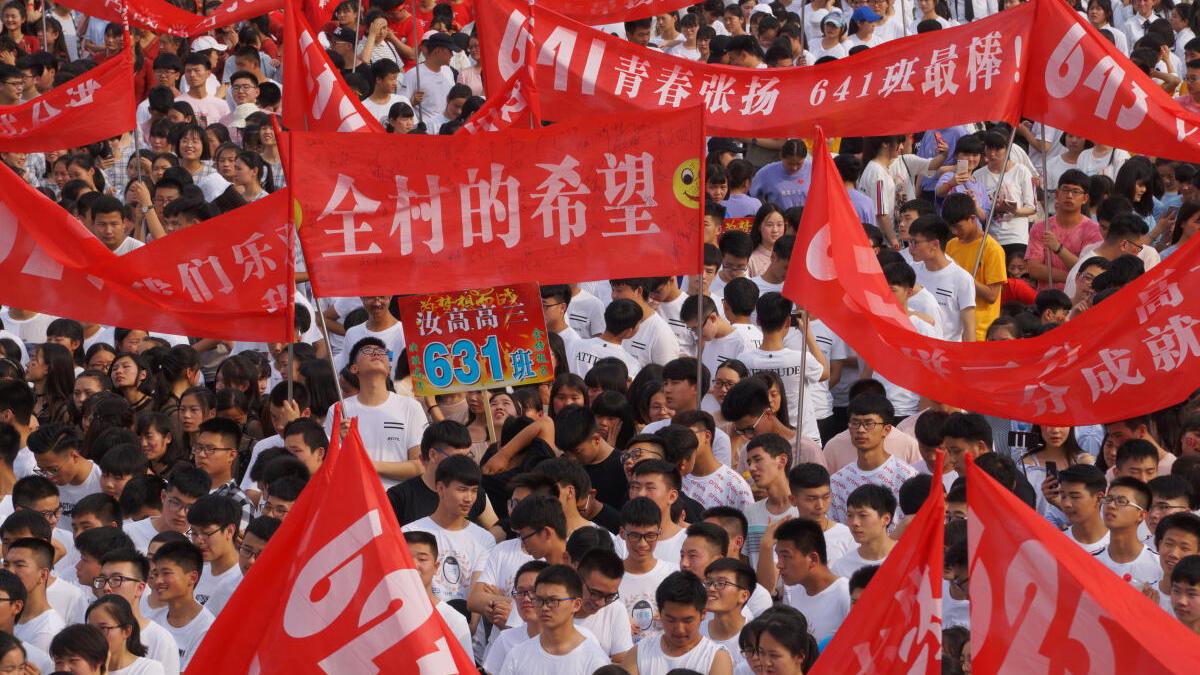India vs China in the talent race: Lessons from Beijing’s strategic education model

The world’s gaze on China’s rise is fixated on the familiar emblems of power: trade balances, sprawling infrastructure, and military parades. Yet, the most profound shift, the one forging the contours of the 21st century, is unfolding quietly in its classrooms and laboratories.
To grasp the magnitude of this change, consider this: in 1949, 80% of China’s population was illiterate. Today, the nation produces nearly 50 lakh STEM graduates every single year, according to analysis by the Australian Strategic Policy Institute. For perspective, India, with its own impressive talent pool, produces around 26 lakh graduates, while the United States produces roughly 6 lakh.
This tidal wave of human capital is the foundational resource of the modern world. It was no accident; it was built upon the bedrock of the 1986 law on nine-year compulsory education. This was a long-term economic strategy to ensure every citizen had a baseline education, thereby creating a vast, literate talent pool from which future scientists and engineers could be harvested. But the truly astonishing story is how this talent was strategically cultivated into a powerful, state-directed engine of innovation.
For years, the Western world dismissed China’s educational output as a trade-off, prioritising quantity over quality. That argument is now dangerously obsolete. This leap in quality was methodically engineered through decades of focused investment.
Initiatives like ‘Project 985’ and ‘Project 211’ identified a select group of universities and funnelled billions of dollars into them to construct world-class labs, attract global academic talent with competitive salaries, and fund ambitious research. The impact was clear and swift.
A landmark 2022 report from Japan’s National Institute of Science and Technology Policy (NISTEP) confirmed the success of this strategy: China had, for the first time, surpassed the United States in its share of the top 1% most-cited scientific papers – a critical metric of research that shapes the future of science. Furthermore, the prestigious Nature Index 2023 now ranks the Chinese Academy of Sciences as the number one research institution on the planet, pushing Harvard University to second place.
Reversing the brain drain
This leap in quality is supercharged by a powerful catalyst: the reversal of the “brain drain.” The narrative of China’s best and brightest leaving for the West is decades out of date. Today, government incentives are creating a powerful “brain gain.” This was the result of meticulous planning, exemplified by programs like the ‘Thousand Talents Plan.’ This initiative was a global recruitment drive on an unprecedented scale, targeting top-tier overseas Chinese scientists with irresistible offers of multi-million-dollar research grants, professional prestige, and the freedom to build their own state-of-the-art laboratories.
The intended impact was to rapidly seed the country with world-leading experts who could then mentor the next generation. In 2021 alone, over one million overseas Chinese students returned home, bringing invaluable global expertise into a system primed to absorb it.
The sharpest edge of this talent revolution is revealed in a report by Georgetown University’s Center for Security and Emerging Technology (CSET), which projects that China is on track to produce over 77,000 STEM PhDs annually by 2025, more than double the output of the United States. This is not a random academic exercise. This doctoral corps is being strategically channelled into fields designated as national priorities. The alignment is achieved by directly linking national industrial strategies, such as ‘Made in China 2025,’ to the academic ecosystem.
The plan explicitly identified ten key high-tech sectors, from AI to electric vehicles, creating a powerful demand signal for universities. In response, these institutions tailored their research and enrolment to produce graduates with the exact skills needed to fulfill the nation’s most critical industrial ambitions, perfectly aligning the supply of talent with strategic demand.
The global implications are monumental too. The nation that leads in these foundational technologies doesn’t just gain an economic edge – it sets the global standards, norms, and ethics that will govern our collective future. The very operating system of the 21st century is being written, and its architects are increasingly in Beijing and Shanghai. This represents a fundamental shift in the centre of gravity of global innovation away from the West for the first time in centuries.
For India, this is not a distant geopolitical drama – it is an urgent and direct challenge. We are in a talent race, and while we possess incredible demographic potential, we lack the coherent, ecosystem-level strategy that defines China’s approach.
Our annual output of 26 lakh STEM graduates is a formidable asset, yet we must ask ourselves the hard questions. Are we creating the research funding, venture capital ecosystem, and advanced manufacturing capabilities to empower this talent at home? Are we doing enough to incentivize our own global diaspora to return and build in India?
The lesson from China is to recognise the undeniable power of a national mission that tightly integrates education with industrial and research objectives. They have turned a population into a strategic asset of unprecedented scale. For India, the conclusion is as stark as it is urgent: the time to formulate our own strategic response is not on the horizon; it is now.
Published – October 08, 2025 07:37 pm IST


